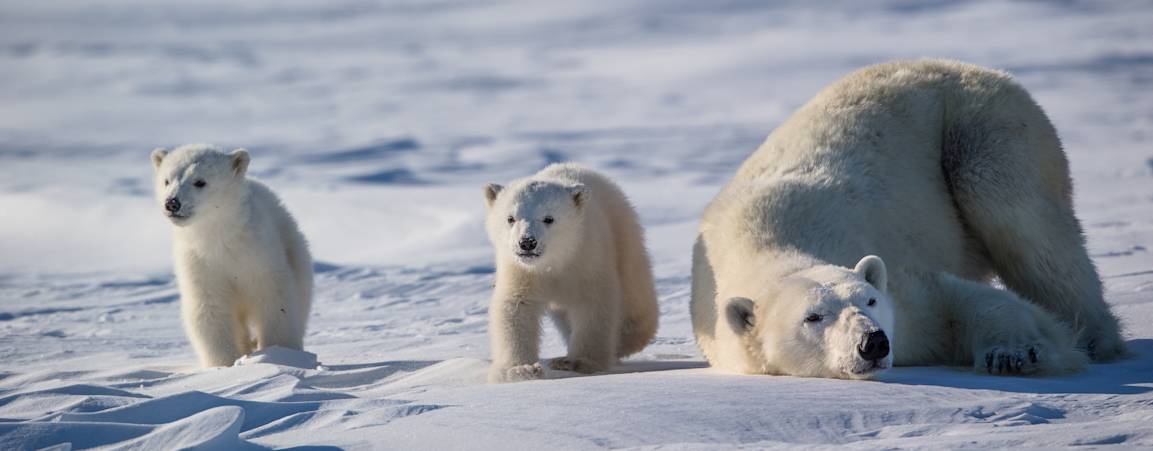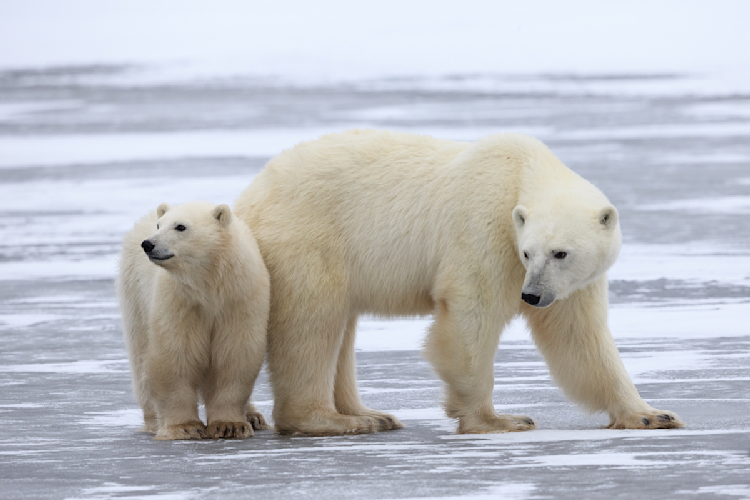
Mom & Me
Learn about polar bear moms and cubs and their connection to Arctic sea ice.

Role of the Unit
Students will learn how sea ice is related to polar bear populations! Featured skills in this lesson include analyzing cause and effect relationships, developing sequenced predictions about natural phenomena, and interpreting data on a graph.

Lesson Plan
Mom and Me Lesson. Students will learn about the relationship between sea ice and polar bear populations and about the ways climate change impacts the sea ice ecosystem in the Arctic.
Other Resources
Tools:
Mom & Cubs Mini Poster: Download this free handout, complete with mom and cub facts and a polar bear word search!
International Polar Bear Day: Celebrate moms and cubs on February 27th and learn more about the importance of the polar bear's denning period.
Become Inspired:
Tundra Connections Webcasts: Watch our webcasts! See polar bears and meet our scientists and experts.
Live Cams: Take a tour through the polar bear’s world with our live Arctic cams.









